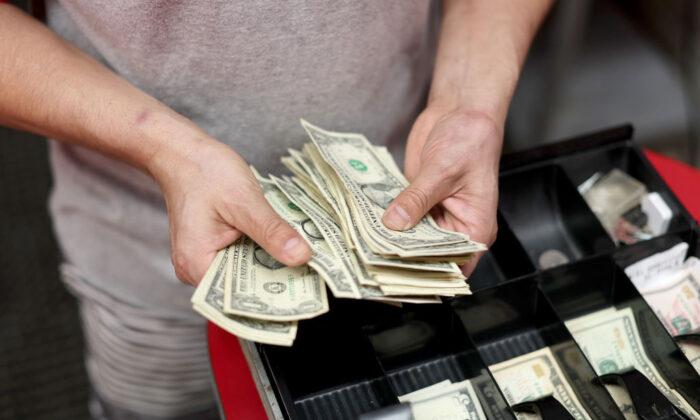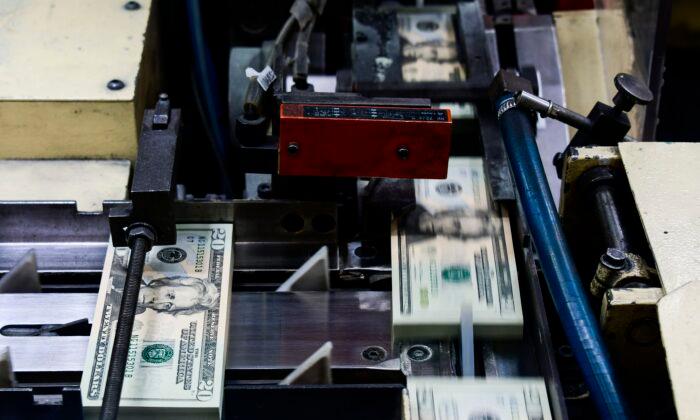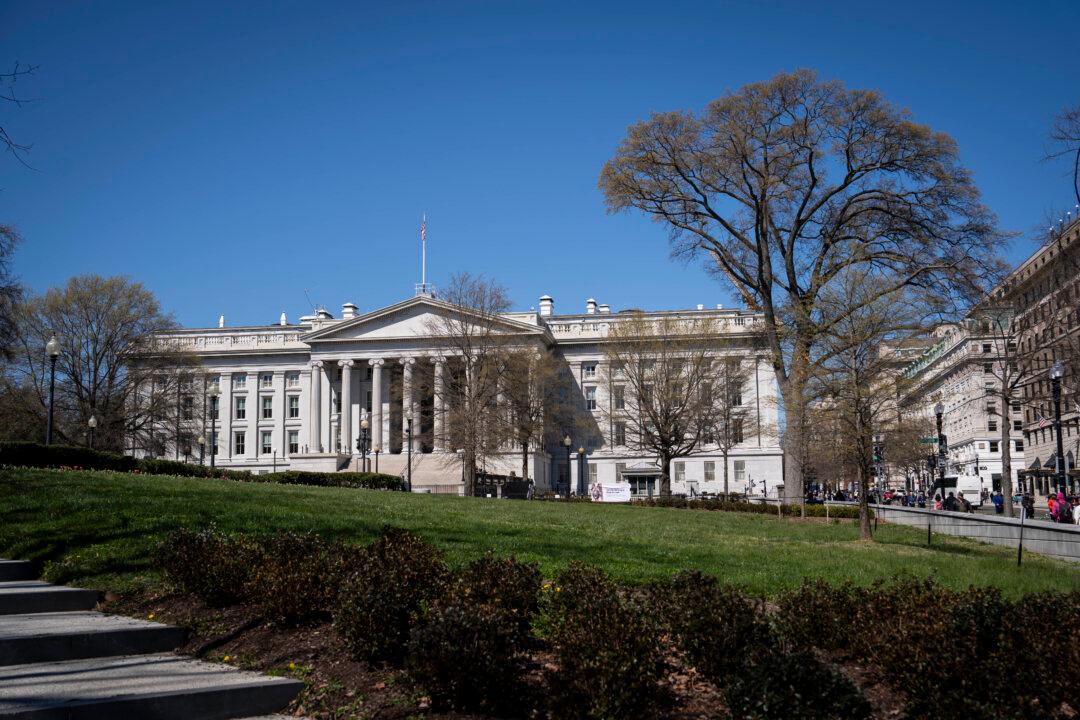Governments love inflation. It’s a hidden tax on everyone and a transfer of wealth from bank deposits and real wages to indebted governments that collect more receipts via higher indirect taxes and devalue their debts. That’s why we can’t expect governments to take decisive action on inflation.
To curb inflation effectively, interest rates must rise to a neutral level relative to inflation, to reduce the excessive increase in credit and new money from negative real rates. Additionally, central banks must end the repurchase of bonds, exchange-traded funds, and mortgage-backed securities, as this would immediately reduce the quantity of currency in circulation. Finally—and most importantly of all—governments need to cut deficit spending, which is ultimately financed by more debt and monetized with newly created central bank reserves. These three measures are crucial. One or two wouldn’t be enough.
However, governments are unwilling to cut deficit spending. The increase in outlays from 2020 because of extraordinary circumstances has been largely consolidated, and they’re now annual structural expenditures. As we’ve seen in previous crises, many of the one-off and temporary measures become permanent, driving mandatory spending to new all-time highs.
Citizens are suffering from elevated inflation, and consumer confidence is plummeting to historic lows in the economies that massively increased money supply growth throughout the COVID-19 pandemic, fueling inflationary pressures through money printing well above demand and demand-side state expenditure plans financed with newly created currency. What do governments implement when this happens? More demand-side policies. Spending and debt.
Imagine for a second that we believed the myth of cost-push inflation and the argument that inflation comes from a supply shock. If that were the case, governments should implement supply-side measures, cutting spending and reducing taxes.
Reducing taxes doesn’t drive inflation higher, because it’s the same quantity of currency, only a bit more of it stays in the hands of those who earned it. Cutting taxes would only be inflationary if demand for goods and services soared because of higher consumer credit and demand, but that’s not the case. Consumers would only have fewer difficulties purchasing daily essential goods and services that they acquire anyway—and some would save, which is good. That same money in the hands of the government, which weighs more than 40 percent in the economy, will inevitably be spent and more, with rising public debt.
One unit of currency in the hands of the private sector may be consumed, invested, or saved. The same unit in the hands of the government is going to current spending and will be multiplied by adding debt, which means more currency in circulation and a higher risk of inflation. Currency supply doesn’t drive more currency demand; it’s the opposite. If inflation ends up destroying the private sector’s consumption ability and the economy goes into recession, demand for currency will fall further from supply growth, keeping inflation elevated for longer.
The rules of supply and demand apply to currency just as they do to everything else.
Rising discontent is leading governments to present bold and aggressive anti-inflation plans, yet almost none of those are supply-side measures, but demand-side ones. Furthermore, the vast majority of them imply more spending, higher subsidies, rising debt, and increased money supply, which means a higher risk of inflation.
Giving checks with newly printed money creates inflation. Providing more checks to reduce inflation is like stopping a fire with gasoline.
Prices don’t rise in unison for the same amount of currency. Anti-inflation plans, as they’ve been presented in numerous countries, are inflationary and hurt those whom they pretend to help. Governments should stop helping with other people’s money and being supportive by demolishing the purchasing power of their currency. The best way to reduce inflation is to defend real wages and deposit savings.






Friends Read Free